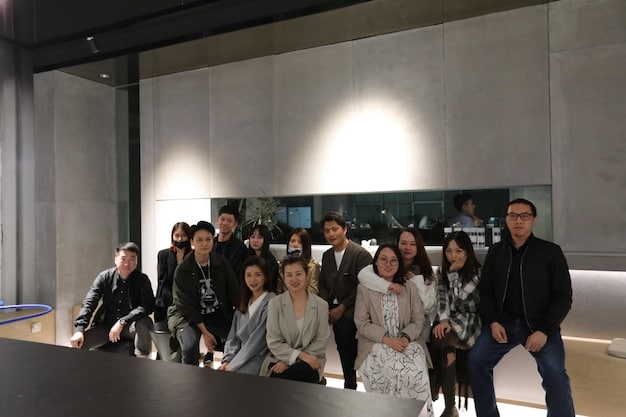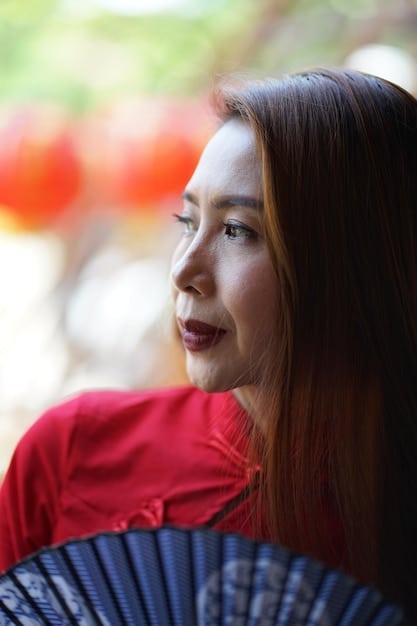Mastering the Art of the Japanese Nod: A 2025 Guide

The art of the Japanese nod is a subtle yet crucial form of non-verbal communication in Japan, conveying understanding, respect, and acknowledgment, and mastering it is essential for effective social interactions and professional success in the country.
Navigating Japanese social and professional environments requires more than just language skills. Understanding and mastering subtle forms of non-verbal communication, such as the Japanese nod, is essential for building rapport and conveying respect. In this guide, we’ll delve into the art of the Japanese nod, providing you with the insights and knowledge you need to navigate this nuanced aspect of Japanese culture in 2025.
Understanding the Cultural Significance of Nodding in Japan
In Japan, nodding is far more than a simple gesture of agreement; it’s a complex social signal deeply rooted in cultural values. It signifies attentiveness, acknowledgment, and respect, playing a vital role in maintaining harmony within social interactions. Understanding this cultural weight is the first step to mastering the art of the Japanese nod.
The Nod as a Sign of Attentiveness
One primary function of the Japanese nod is to demonstrate that you’re actively listening and engaged in the conversation. It shows the speaker that you’re paying attention and processing the information they’re sharing.
Nodding as Acknowledgment and Respect
Nodding also serves as a form of acknowledgment, indicating that you understand what the speaker is saying, even if you don’t necessarily agree with it. It’s a sign of respect for their position, regardless of your own views.
- Showing attentiveness and engagement during conversations.
- Signifying comprehension of the speaker’s message.
- Displaying respect and politeness toward the speaker.
- Maintaining harmony and avoiding direct confrontation.
By understanding the cultural significance of nodding, you can begin to appreciate its importance in Japanese communication. It’s a subtle but powerful tool for building relationships and navigating social situations with grace and respect.

Different Types of Japanese Nods and Their Meanings
The Japanese nod isn’t a one-size-fits-all gesture. There are various types of nods, each conveying a slightly different meaning depending on the context and the relationship between the individuals involved. Learning to distinguish these nuances is crucial for effective communication.
The “I’m Listening” Nod
This is the most common type of nod, used to show that you’re paying attention and following along with the conversation. It’s typically a small, gentle nod repeated periodically throughout the discussion.
The “I Understand” Nod
This nod indicates that you comprehend the speaker’s point, even if you don’t necessarily agree with it. It’s often a slightly more pronounced nod than the “I’m listening” nod, accompanied by a slight pause.
- The subtle “I’m listening” nod for general conversation.
- The slightly deeper “I understand” nod.
- The respectful bow-nod to superiors.
- The quick, slight nod among equals.
Understanding the different types of nods and their meanings allows for more effective and nuanced communication in Japanese social and professional settings. Paying attention to these subtle cues can greatly enhance your interactions and build stronger relationships.
Navigating Nodding Etiquette in Business Settings
In Japanese business environments, nodding takes on even greater significance. It’s a critical element of professional etiquette, used to convey respect, build consensus, and facilitate smooth communication during meetings and negotiations. Adhering to these unspoken rules is essential for building trust and establishing strong working relationships.
Hierarchy and Nodding
In hierarchical business structures, the depth and frequency of your nod should reflect your position relative to the person you’re addressing. Nodding to superiors should be more respectful and deliberate, while nodding to colleagues or subordinates may be more casual.
Nodding During Presentations and Meetings
During presentations or meetings, nodding is a crucial way to show your engagement and understanding. It encourages the speaker and helps maintain a positive and productive atmosphere.

Mastering nodding etiquette in business settings can significantly enhance your professional interactions in Japan. By paying attention to the context, hierarchy, and the specific type of nod being used, you can build rapport, demonstrate respect, and contribute to a harmonious and productive work environment.
The Art of Matching Nods: Building Rapport
Mirroring someone’s body language is a well-known technique for building rapport, and nodding is no exception. Subtly mirroring the nodding style of the person you’re interacting with can create a sense of connection and understanding, fostering a more positive and collaborative atmosphere.
Subtle Mimicry
The key to successful mirroring is subtlety. Avoid directly copying someone’s movements, as this can come across as insincere or even mocking. Instead, subtly adjust your own nodding style to match theirs in terms of frequency, depth, and speed.
Building Trust and Connection
When done effectively, mirroring can create a subconscious sense of connection and trust. People tend to feel more comfortable and receptive to those who seem similar to them, and mirroring can help establish that sense of similarity.
- Observe the other person’s nodding style carefully.
- Subtly adjust your own nodding to match theirs.
- Be mindful of cultural differences and avoid direct imitation.
- Focus on creating a sense of connection and understanding.
By mastering the art of matching nods, you can significantly enhance your ability to build rapport and establish positive relationships in Japan. It’s a subtle but powerful tool for fostering trust and creating a more harmonious and collaborative environment.
Common Nodding Mistakes to Avoid
While nodding is generally seen as a positive gesture in Japan, there are certain mistakes that can lead to misunderstandings or even offense. Being aware of these pitfalls and actively avoiding them is crucial for effective communication and maintaining positive relationships.
Excessive Nodding
While showing attentiveness is important, excessive nodding can be interpreted as insincere or even condescending. It can also create the impression that you’re not truly listening but simply trying to appease the speaker.
Infrequent Nodding
On the other hand, infrequent nodding can be seen as a sign of disinterest or disrespect. It can make the speaker feel like you’re not engaged in the conversation or that you don’t value their viewpoint.
The Future of Nodding: 2025 and Beyond
As Japan continues to evolve and adapt to global influences, the role of nodding in communication may also undergo some changes. While the fundamental principles of respect and attentiveness are likely to remain constant, the specific nuances of nodding etiquette may become more flexible and adaptable.
Influence of Global Communication
With the increasing globalization of the Japanese workforce, there may be a greater understanding and acceptance of different communication styles, including variations in nodding behavior. However, it’s still important to be mindful of cultural sensitivities and to adapt your communication style accordingly.
Technology and Non-Verbal Cues
As technology continues to play a larger role in our lives, it will be interesting to see how it impacts non-verbal communication in Japan. While face-to-face interactions will likely remain important, virtual communication platforms may necessitate a greater emphasis on clear and unambiguous nodding gestures to compensate for the lack of physical presence.
- Pay attention to the speaker’s cues and adjust your nodding accordingly.
- Be mindful of the context and the relationship between individuals.
- Stay informed about evolving cultural norms and expectations.
- Cultivate a genuine sense of respect and attentiveness.
By staying informed, adaptable, and respectful, you can navigate the future of nodding in Japan with confidence and grace. The key is to remain mindful of the cultural context and to prioritize genuine communication and understanding.
| Key Concept | Brief Description |
|---|---|
| 🤔 Cultural Significance | Nodding shows attentiveness, respect, and understanding. |
| 👔 Business Etiquette | Proper nodding enhances professional interactions in Japan. |
| 🤝 Building Rapport | Mirroring nods creates connection and fosters trust. |
| 🚫 Mistakes to Avoid | Excessive or infrequent nodding can lead to misunderstandings. |
Frequently Asked Questions
▼
Nodding in Japan is more than just agreement; it’s about showing the speaker that you are actively listening, respecting their viewpoint, and understanding their message, crucial for maintaining harmony in conversations.
▼
Yes, various nods exist. There’s the “I’m listening” nod, generally small and frequent, and the “I understand” nod, more pronounced, indicating comprehension even without complete agreement.
▼
In business, nod more respectfully to superiors, showing deference to their position. During presentations, consistent nodding signals engagement and encourages the speaker, fostering a productive atmosphere.
▼
Avoid excessive nodding, which can appear insincere, and infrequent nodding, which may seem rude or disinterested. Balance and sincerity are key in conveying attentiveness and respect effectively.
▼
As Japan globalizes, nodding etiquette may adapt, blending traditional norms with international communication styles. Maintaining awareness and sensitivity in adapting your style remains essential for genuine interactions.
Conclusion
Mastering the art of the Japanese nod is about more than just mimicking a gesture. It’s about understanding the cultural values and social nuances that underpin this subtle form of communication. By paying attention to the context, the relationship between individuals, and the specific type of nod being used, you can significantly enhance your ability to build rapport, demonstrate respect, and navigate Japanese social and professional environments with confidence and grace.





